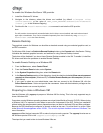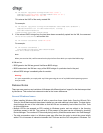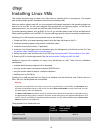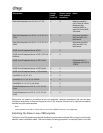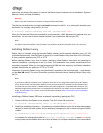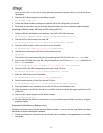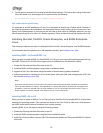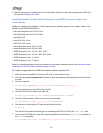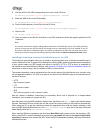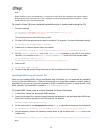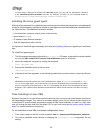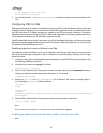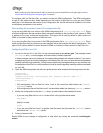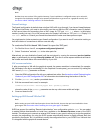
18
2. Set the kernel command-line correctly for the VM before starting it. This can be done using XenCenter's
New VM wizard or by executing an xe CLI command like the following:
xe vm-param-set uuid=<uuid> PV-args=<preseed_arguments>
Apt repositories and Lenny
For infrequent or one-off installations of Lenny, it is reasonable to directly use a Debian mirror. However, if
you intend to do several VM installations, we recommend that you use a caching proxy or local mirror. Apt-
cacher is an implementation of proxy server that will keep a local cache of packages. debmirror is a tool
that will create a partial or full mirror of a Debian repository. Either of these tools can be installed into a VM.
Installing Red Hat, CentOS, Oracle Enterprise, and SUSE Enterprise
Linux
This section provides an overview of installing Red Hat, CentOS, Oracle Enterprise, and SUSE Enterprise.
For information about the general Linux VM installation process, see Installing Linux VMs.
Installing RHEL 5.x/CentOS/OEL 5.x
When you want to create a RHEL 5.x/CentOS/OEL 5.x VM, you must ensure the operating system will use
the RHEL 5.4 kernel (2.6.18-164.el5) or higher, which is available from the distribution vendor.
1. Create the VM using the New VM wizard or the CLI.
2. Install the RHEL operating system using vendor's installation media.
3. Upgrade to the 5.4 or later kernel using the vendor’s normal kernel upgrade procedures.
4. Follow the process for installing the Linux Guest Agent, setting the time, and configuring the VNC. See
the overview Installing Linux VMs.
Note:
Enterprise Linux (EL) kernel versions prior to 5.4 contain issues that prevent proper operation as a XenServer
VM. In previous XenServer releases, Citrix provided a 5.x kernel with fixes for those issues and required its
installation. Since the required fixes are now available in 5.4 (2.6.18-164.el5) and later kernels, Citrix no
longer supplies a 5.x kernel. Instead, Citrix requires use of a 5.4 or later kernel.
Installing RHEL 4.5 to 4.8
When you want to create a RHEL 4.5 to 4.8 VM, you must install the Citrix-provided RHEL 4.8 kernel after
installing the operating system. Citrix includes this kernel in the Citrix Tools for VMs, and it fixes issues in
the RHEL kernel which prevents XenServer from running correctly.
Installing RHEL 4.5 to 4.8 requires using the following process:
1. Create the VM using the New VM wizard or the CLI.
2. Install the RHEL operating system using Red Hat's installation media.
3. Install Citrix Tools for VMs on the new VM. This automatically installs the Citrix-provided RHEL 4.8 kernel
on the VM.



